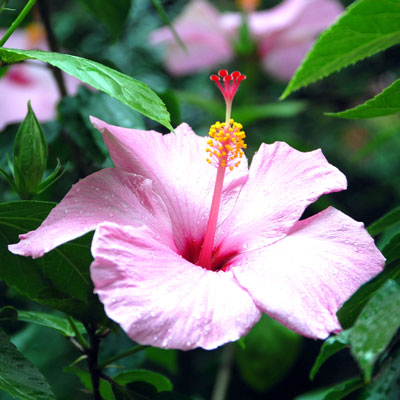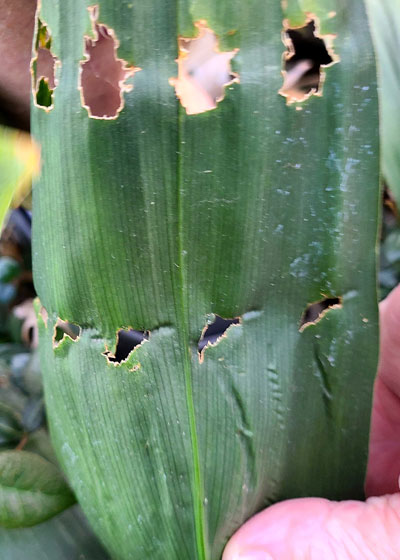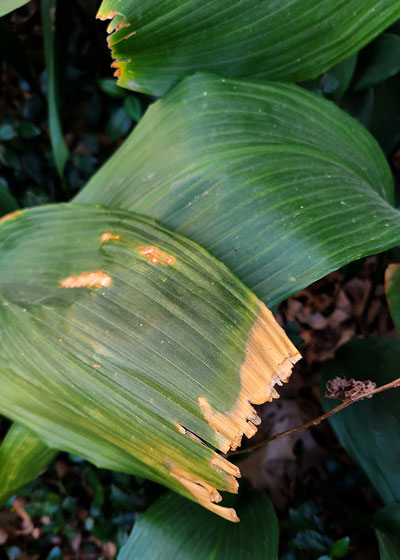Q&A – Ask Neil: March 14, 2024
(Please read these instructions carefully.)
Before you post your question, please look at recent issues to see if someone else has already asked it. You might find your answer there.
How to submit your question…
(Note: You may need to allow a pop-up window to come up in order to get the link for sending your photo(s). If you have already submitted your question and didn’t see the pop-up window, please click here.)
• Click the link provided below to post your question. After you submit your question, a new window will pop up giving you the address to which you can e-mail a SHARP, HIGH-RESOLUTION PHOTO to accompany your question. Please DO NOT SEND THUMBNAIL PHOTOS in case I need to zoom in to see things.
• Click here to post your question.
• Please ONLY POST YOUR QUESTION ONE TIME. We can only accept a set number of questions each week, and when we get duplicates it costs other people their chances.
• One question per reader, please.
• Please use this only for posting questions – not for standard emails.
• Watch for your answer in the following week’s e-gardens.
• I choose those of greatest general interest. For example, plant IDs seldom make the cut.
• I must have your first name or initials.
• I must have your city or county. (Texas is a very large state.)
QUESTION 1
WHEN SHOULD I START FEEDING TROPICALS NOW THAT THEY’RE BACK OUTSIDE?
Question: Now that I’ve moved my patio plants (hibiscus, bougainvilleas, etc.) back outside, when should I start feeding them? How often? Cindy P., San Antonio.

Answer: Assuming they’ve been without much nourishment all winter, you could start right away. Use a high-nitrogen, water-soluble fertilizer applied at the dilution rate recommended on its container and apply it each time that you water them. Frequency, therefore, will vary with temperature and rate of growth, so it will regulate itself automatically.
QUESTION 2
HOW CAN WE PROTECT OAKS THAT MUST BE PRUNED NOW?
Question: We have two branches that must be removed from a live oak for safety reasons. It’s an emergency situation. What can we do to protect the tree? Olga G-O, Dallas.
Answer: Of course, use the 3-step approach to branch removal to take them down without peeling bark down the trunk. Then cover the exposed surfaces immediately after you finish the cuts with pruning paint or any type of house paint. Your goal is merely to seal the cut surfaces. If you have any doubts about how it should be done, a certified arborist trained in dealing with oak wilt can help you. Our advertisers here in e-gardens (Arborilogical Services) serve your area and are quite skilled. One of their lead men has his Masters Degree in Plant Pathology from Texas A&M with a focus on oak wilt.
QUESTION 3
I APPLIED PRE-EMERGENT AS YOU RECOMMENDED TO PREVENT ANNUAL BLUEGRASS (AUGUST 28). I HAVE NEVER HAD MORE.
Question: I was faithful to apply pre-emergent granules as you recommended for annual bluegrass. I applied them August 28, and I’ve never had more of the weed. What gives? Mark A., Robinson, McClennan County.
Answer: Many people are reporting the same problem. I tried to point out that concern several times the last couple of years as it became more publicly known. I looked for research from universities and other professional organizations to offer some help to you. Here are a couple I found mixed among the many, many recommendations of pre-emergent controls.
• Clemson talks about the fact that Poa annua seems to be building resistance to pre-emergent herbicides, and they offer suggestions of how to work around it.
https://hgic.clemson.edu/factsheet/annual-bluegrass-control/
• North Carolina State University has a slightly different outlook on it due to their weather of a specific recent year. It’s still worth reading. https://www.turffiles.ncsu.edu/2019/04/annual-bluegrass-poa-annua-spring-invasion/
• The University of California at Davis further confuses the issue by telling us there are two similar but distinct types of Poa annua, one annual and one perennial. I don’t know that that applies to Texas at all due to our extreme heat in summer, but I do know that some of the finest golf courses on the California coast have Poa annua greens. I didn’t read this entire fact sheet because of their font size, but here it is if you want it. https://ipm.ucanr.edu/PMG/PESTNOTES/pn7464.html
• Finally, and importantly, I smiled as I read every word of this one from last fall from the US Golf Association. It was written by a professor at Penn State, and its title is “Understanding Poa annua,” but it doesn’t exactly get us all the way down that road. It’s just a really interesting read. https://www.usga.org/content/usga/home-page/course-care/green-section-record/61/issue-17/understanding-poa-annua.html
So, while I don’t have much of an answer for you, you can tell that I tried. I gave it an hour, and I find that the pros are also still struggling. It appears we have a bumpy road ahead of us with this weed. I believe I’d keep tabs on what Clemson finds out. They seem to be closest to what we’re experiencing here in North Texas.
QUESTION 4
SHOULD OLD MULCH BE REMOVED BEFORE NEW MULCH IS ADDED?
Question: Our pest control company said we should remove old mulch in our flowerbeds before adding new mulch. They also told us that the mulch should be 4 inches below the foundation’s top to keep termites at bay. Do you agree? Wanda C., Plano.
Answer: I agree with keeping mulch and soil below the top of the foundation. That would keep termites from having a direct path into the wood in your house, and it would keep you from blocking the vent holes in the mortar joints. So, yes, that’s a good idea. But I’m not quite as willing to agree to removing the old mulch. That would apply if it is gravel or lava rock, for example, or weed-blocking fabric. However, if it’s organic matter it is probably decaying and releasing organic matter and nutrients back into the soil. If it is organic matter, and if you do opt to remove it, at least use it in the compost or rototill it into your garden.
QUESTION 5
WHAT WOULD BE EATING MY CAST IRON PLANTS?
Question: Something is eating my cast iron plants. It chews holes across the leaves, then it dries up between the holes and a portion of the leaf falls off. What is causing it, and what can I do? Steve C., Bedford.


Answer: Yours is a first for me in a couple of ways. First time, in 54 years, that I’ve been asked this question about cast iron plants (Aspidistra elatior). And, in spite of the fact that I have several hundred of them in my own landscape, the first time that I’ve seen this damage.
I’ll start with what I do know…
• This is not new damage. These are old leaves from last year or before. The wounds are from last year.
• Cannas have leaves somewhat like those of cast iron plants – long, wide, and flat.
• Canna leaf rollers are insect larvae that attack the leaves while they are still tightly rolled, before they unfurl. If you think about rolling up a piece of paper into a cylinder, then drilling a hole through it – if you were then to unroll it, that’s how a canna leafroller’s damage would look. Like a machine gun had strafed the leaf.
• This looks the same way.
Here’s what I’m assuming…
• Some insect attacked these leaves as they were emerging and unrolling last spring. It chewed one hole through one leaf, but as the leaf unrolled, it exposed all the leaf tissue. Over the course of the long, hot summer, the tissues dried and died and fell apart.
• I looked at several hundred photos of “Insects attacking Aspidistra elatior leaves chewing holes.” I found only one that matched your photos. (I think you’ll get a chuckle out of the file name and how far I had to go to find it.):
https://stock.adobe.com/cz/images/holes-in-green-leaf-aspidistra-elatior-cast-iron-plant-or-bar-room-plant-with-holes-made-by-bugs-and-insects/357477925
QUESTION 6
WILL YAUPON HOLLIES FROM ROOT SPROUTS HAVE RED BERRIES IF THE MOTHER PLANT DOES?
Question: I potted up two standard yaupons from root sprouts. Will these have red berries if the plant from which I took them did? Gary K., Lott, Falls.
Answer: Yes. They will be genetically identical. If you haven’t already done so, you may have to trim part of the sprouts’ tops back to compensate for the disturbance of cutting them loose from the mother plant. I offer that thought without seeing any photo.
